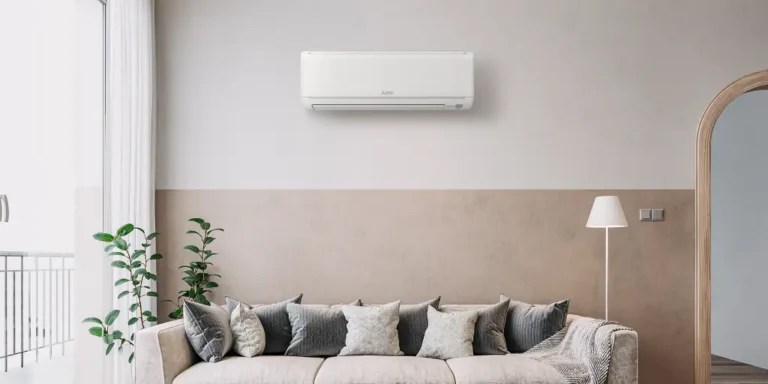Ductless
Mini Split Systems
Living in Las Vegas means needing an effective way to cool your home and beat the heat, especially during summer. Running the AC constantly is costly and can wear out your system. If you have an older home without ductwork, traditional AC may not be feasible without major renovations.
Luckily, a ductless mini split system could be the solution you need. At ResQ Solutions, we specialize in installing and repairing ductless mini split systems. They offer full comfort and AC benefits without requiring ductwork, making them ideal for homes in Las Vegas and Henderson.
If you’re seeking an alternative HVAC solution, consider a ductless mini split system for efficient cooling.

Introduction to Ductless Mini-Split
A ductless mini-split system operates without ductwork, using a single outdoor air compressor connected to indoor handling units that cool and distribute air throughout rooms. This “split” system involves connecting the outdoor unit to indoor units via refrigerant lines, suction tubing, and a condensate drain line, rather than through ducts. Typically, one outdoor unit can connect to multiple indoor units, each of which can be controlled independently.
Ductless Mini-Split vs. Forced Air
If you haven’t yet explored ductless mini split systems in Las Vegas, you’ll likely hear more about them in the future. Increasingly, homeowners are opting for ductless mini splits over traditional forced air systems during renovations or new additions.
Wondering why ductless mini split systems are gaining popularity? Consider these advantages:
- They bypass ductwork, improving energy efficiency and reducing costs.
- Each condenser unit can cool up to four rooms, with zoning capabilities.
- Each zone has its own thermostat, preventing energy waste in unoccupied rooms.
- Mini splits can be easily wall-mounted, installed flush into drop ceilings, or hung.
Average Lifespan of Ductless Mini-Split Systems
The lifespan of a ductless mini-split system can vary depending on factors like brand, model, usage, and maintenance. Typically, a well-maintained unit can last between 15 to 20 years or more. Regular maintenance, including air filter cleaning/replacement, checking refrigerant levels, and cleaning both indoor and outdoor units, plays a crucial role in extending its lifespan.
While core components such as compressors and condensers are durable, individual parts may need replacement over time. Technological advancements and energy efficiency improvements might also prompt upgrades before the system’s full lifespan.
To ensure your ductless mini-split system performs well and lasts long, adhere to manufacturer maintenance guidelines and schedule professional inspections. Regular upkeep not only prolongs lifespan but also maintains energy efficiency and performance.
Frequently Asked Questions
Do I need a professional to install mini-split?
A certified HVAC contractor with mini split and heat pump experience is the best choice to install these systems in your home. DIY or having an electrician handle part of the job voids the warranty and leads to poor performance.
Is it cheaper to install a mini-split or central air?
The U.S. Department of Energy reports that installing a central air system can cost up to 30 percent less than installing a ductless one. However, ductless mini-splits generally have lower long-term operating costs and often require less maintenance and repair.
Are the disadvantages of a mini-split system?
One drawback of mini-split systems is their cost, which typically ranges from $1,500 to $2,000 per ton (12,000 Btu per hour) of cooling capacity. This is approximately 30% higher than central systems (excluding ductwork) and may be double the cost of window units with similar capacity.
Where should you not install a mini-split?
Avoid installing a mini split unit in locations with obstructed airflow, direct sun exposure, excessive heat sources, unstable ground, or improper height or space considerations. These conditions can compromise performance and efficiency.
Does every room in the house need a mini-split?
A complete mini-split system (including an outdoor condenser and indoor air-handler) isn't usually necessary for every room, but having an indoor air-handler in each room is often recommended.
Are mini splits high maintenance?
Yes, regular maintenance is necessary for mini splits to maintain efficiency, longevity, and optimal performance.
How long do mini splits last?
Ductless mini-split systems can last up to 20 years, especially under ideal conditions, compared to the typical service life of around ten years for conventional air conditioning units. This extended longevity makes them one of the most durable home appliances available, emphasizing their value for money.
Will a mini-split cool my whole house?
Modern ductless mini-split systems can provide year-round comfort by heating and cooling entire houses. They are highly energy-efficient, resulting in lower operating costs compared to other common HVAC solutions.
Are mini splits the future of HVAC?
The future of air conditioning is increasingly centered around mini-split systems, and the reasons are clear. Also known as ductless air conditioning systems, mini splits are gaining popularity due to their numerous benefits.
Is it OK to run a mini split continuously?
A mini split can run continuously 24/7 because these systems are specifically designed for continuous operation. In fact, keeping your mini split running can improve energy efficiency and enhance its ability to maintain consistent temperatures using its internal settings.
